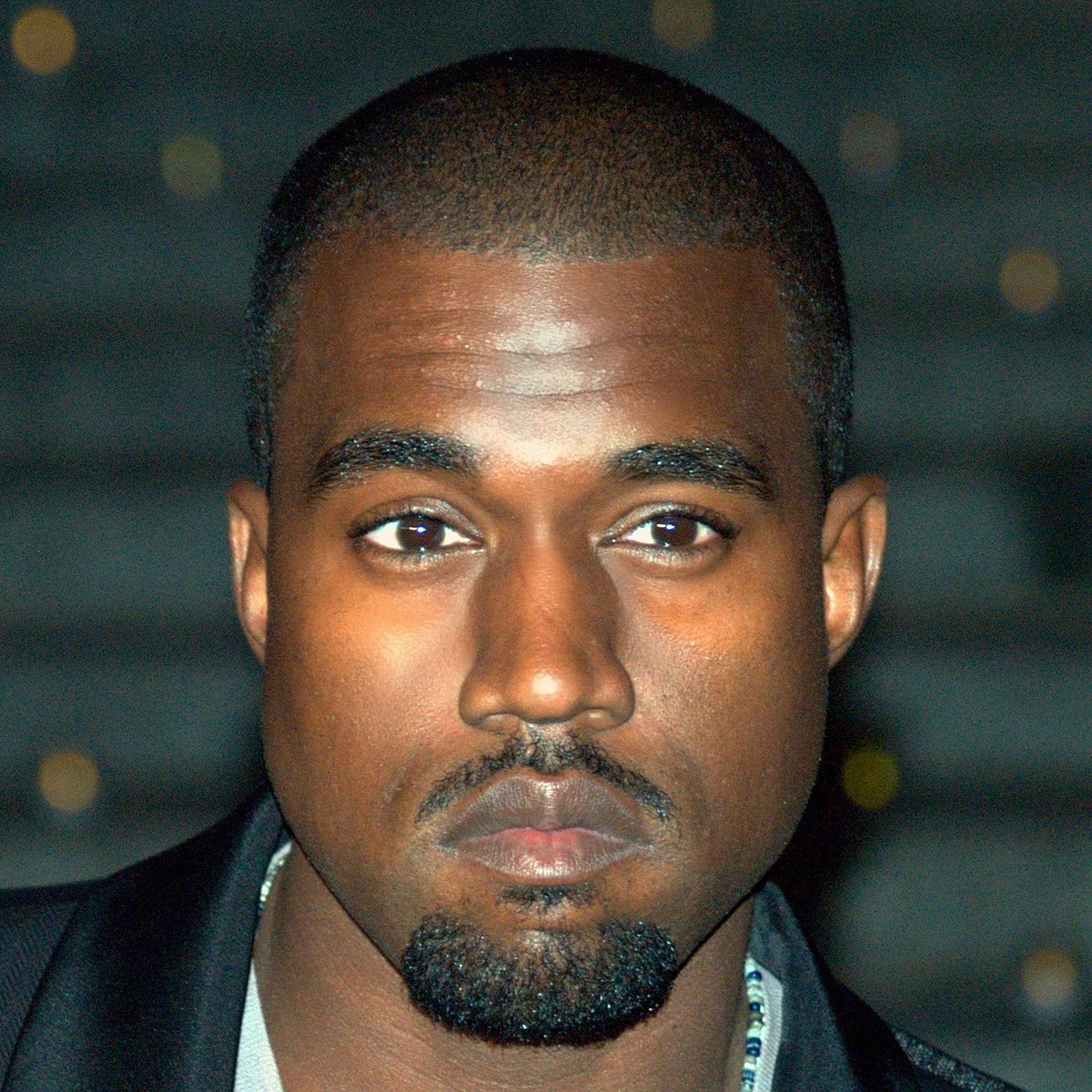
cosine similarity: 0.34
softmax: 92.55%
[0.4,-0.2,-0.1,0.3,0.5,-0.8,0.3,0.2,0.1,0.1,0.1,-0.2,-0.1,-0.3,0.3,0.1,0.2,-0.2,0.4,-0.5,-0.4,-0.2,0.5,0.1,0,0.3,0.5,-0.4,0.1,0,-0.1,0.4,-0.3,-0.5,0.6,0.6,0,-0.1,-0.1,1.5,-0.7,-0.3,0.1,-0.1,0.1,-1.5,0.1,0.2,0.1,0.2,0.1,-0.3,0.2,0.2,0,0,0.2,0.3,-0.4,0.1,0.2,0.1,0.5,0.5,-0.2,-0.4,0.2,0.9,-0.4,-0.1,0.1,0.3,0.2,-0.2,-0.2,0,-0.2,-0.5,-0.4,-0.1,0.2,0.1,-0.4,-1,0,-0.4,0.8,-0.6,0,-0.5,-0.1,-0.6,-5.3,0.3,0,0.3,0,-0.1,-0.1,-0.4,0.2,-0.3,0.3,-0.1,0.5,0.1,1.1,0.3,-0.4,0.1,0.2,-0.7,-0.2,-0.2,0,-0.3,-0.3,-0.2,-0.1,0.1,0.5,0.6,-0.3,-0.3,0.1,-0.3,-0.2,0.4,-0.1,0.2,0.3,0,-0.4,0.8,-0.7,0.3,0.1,-0.2,0.2,0.3,-0.2,0,0.6,-0.1,-0.4,0.6,-0.1,0.4,-0.2,0.2,-0.3,0.3,-0.3,-0.3,-0.2,0,0,-0.4,-0.4,0.2,-0.3,0.2,0,0.5,0.3,-0.1,0.6,0.1,-0.2,0,0.2,-0.1,0.3,-0.2,0,-0.6,0,0,0.2,0.2,0,0.2,0.2,-0.5,0.1,-0.3,0.2,-0.5,0.1,0.1,0.1,0.3,0.2,0.2,-0.4,-0.1,0.5,-0.3,-0.4,-0.5,0.4,0.1,0,0.2,-0.5,-0.9,-0.2,0.1,-0.1,0.4,0.3,-0.2,-0.2,0,0,-0.3,-0.1,-0.1,0.8,-0.3,1.2,0.6,-0.2,0.2,0.2,0,0.1,0.1,0.2,-0.4,0.1,0.4,0.1,0.6,-0.1,-0.8,-0.4,-0.6,-0.2,0.1,0,0.2,0.3,-0.3,0,0.3,0.4,-0.2,0.5,0.3,-0.1,0.1,0.1,0.4,0.4,0.4,0.1,0,0,0.1,-0.1,0.4,0.3,-1.3,-0.1,-0.2,-0.3,0.1,-0.3,0.2,-0.1,-0.2,0.6,0.2,0.1,0,0.1,-0.3,0.1,0.3,-0.3,-0.1,-0.5,-0.4,0,0.2,-0.4,-0.2,0.2,0,0.1,0,0.2,-0.1,0.1,0.1,0.4,0.1,0.4,-0.1,0,0,-0.1,0,0.5,0.1,-0.3,0.5,0.2,-0.4,-0.7,0.8,0.8,-0.1,0.1,-0.2,0.2,-0.1,-0.4,-0.1,0.5,0,-0.3,0.8,-0.2,0.4,-0.3,0.2,-0.3,-0.2,-0.2,-0.4,0.2,-0.5,0,0.1,0.2,0.2,0.2,0,0.2,-0.4,-0.1,0.1,0.5,0,0.4,0.2,-0.6,-0.3,-0.5,-0.1,-0.2,-0.2,0.2,1.1,0.3,-0.7,0.5,0,0.9,0.2,0,0.6,-0.5,0.3,-0.2,-1,-0.3,-0.1,-0.5,-0.1,0,-0.2,0.1,0.2,1.1,0.4,0,0.3,-0.2,-0.6,0,0.2,0.2,-0.1,-0.3,0,0.5,-1.5,-0.1,-0.7,0.3,-0.3,-0.1,-0.4,-0.1,0.5,-0.5,-0.6,0.2,0.2,-0.2,-0.2,0.1,-0.3,-0.2,-0.5,0.4,-0.5,1,-0.4,-0.7,0,0,0.2,0,0.2,-0.1,0,0.3,-0.1,0.3,-1,0.3,0,-0.3,-0.1,-0.5,0,0,0.3,0,-0.6,-0.2,-0.2,-0.7,0.3,0.5,0.1,0,-0.1,-0.4,0,0.2,-0.5,-0.3,-0.1,-0.4,0.1,-0.5,-0.4,0,0,-0.2,-0.1,-0.3,-0.1,0.3,0.2,-0.5,0.1,0,0.1,0.7,0.5,0,0.3,-0.1,0.2,0.3,-0.1,-0.6,-0.5,-0.2,0.1,-0.3,0.1,-0.2,-0.2,0.3,-0.2,0,-0.2,-0.6,-0.5,-0.2,0.3,0,-0.3,-0.3,0.1,0.5,-0.3,0,-0.7,0.6,0.4,-0.4,0.1,-0.1,-0.1,-0.3,0.4,0.8,0.3,0,-0.3,-0.7,0.2,0.4,0]

cosine similarity: 0.08
softmax: 2.31%
[-0.3,-0.2,0.1,-0.3,-0.2,-0.3,-0.2,0.7,0.8,-0.1,0.2,-0.4,0.4,-0.3,0.3,0.1,0.3,-0.1,0,0.2,-0.3,0,0.6,-0.1,-0.9,-0.2,0.5,-0.1,0,0.1,0,0.2,0,0.1,0.1,0.2,0.2,0,0.1,1.3,-0.7,-0.6,0,0.1,0,-1.1,0,0.2,0.2,-0.3,0.1,0.5,0.5,0,0.2,-0.2,0.4,0.6,-0.1,-0.2,1,-0.3,0,-0.3,-0.1,-0.6,0.1,0.6,-0.1,0.1,0,-0.3,0.1,-0.2,-0.1,-0.4,-0.1,-0.4,0.1,-0.3,-0.2,-0.4,-0.4,-0.1,0,0.2,1.4,-0.7,0.1,-0.1,0.1,-0.6,-7.1,0.3,-0.3,0.4,0,-0.5,-0.8,1.4,0.1,-0.4,-0.1,0.2,0,0.1,0.1,0.6,0.2,-0.3,-0.6,-0.4,0.5,0.3,0,0,-0.1,0.2,0.5,-0.2,0.3,0,0.2,-0.1,0.3,-0.4,0.1,0.4,-0.1,0,-0.3,-0.3,-0.1,0.8,-0.5,0.1,-0.2,-0.6,-0.2,0,0.6,0,0.4,0.5,-0.5,0.3,0.3,0.4,0.2,0.2,-0.1,0.2,-0.6,-0.1,-0.1,-0.2,0,-0.7,-0.2,-0.3,0.1,-0.1,0,-0.1,-0.1,0,0.4,0.4,0,0.1,-0.2,0.5,0.4,0.4,-0.4,0.2,0.2,0,0.6,0.4,0.1,-0.3,-0.1,0,0.2,0.2,-0.2,-0.6,0.3,-0.1,0.5,-0.4,0,-0.1,0.4,0,-0.1,-0.6,-1.7,-0.3,0,0.1,0,0.1,0.1,-0.1,-0.1,-0.1,0,0.4,-0.2,0.4,0,0.4,-0.4,-0.3,0,-0.2,1.1,-0.3,0.7,0.5,-0.3,-0.1,-0.2,0.3,0,-0.1,0,0,0.1,0,-0.4,0.3,0.3,0,0,0.1,0,-0.5,0.6,0.2,0.2,0,0.1,0.5,0.2,-1,-0.4,0.2,-0.2,0.4,0.1,-0.1,0.3,0.1,-0.2,0.1,0.1,-0.2,-0.3,0.3,0,-1.8,-0.1,-0.4,-0.1,0,-0.1,-0.1,-0.1,0,0.6,-0.2,-0.5,0,0,0.2,-0.5,0,0.2,0.3,-0.4,0,0,0.1,-0.8,-0.1,0.1,0,-0.1,-0.1,0.1,0.3,0.4,-0.1,0.3,-0.1,0.2,0.4,0.3,-0.1,0,0,0.1,-0.2,0.1,0.2,0.6,0.1,-0.6,0.3,0.8,0,0.1,0.4,0.3,-0.1,0.1,-0.1,0.5,1,-0.5,0.4,-0.1,0,-0.1,0.1,0.2,-0.1,-0.1,-0.6,0.2,-0.1,0.1,0.3,0.3,-0.1,0,0,0,-0.6,0,0.6,0.1,-0.4,0,0.3,0,-0.3,-0.7,-0.6,0.4,-0.4,-0.2,0.2,0,-0.8,0.3,0.5,-0.2,0.1,0.6,0.5,-0.1,0.2,0.1,-0.5,0.1,0,0.3,0.4,-0.1,-0.3,-0.3,-0.1,1.2,0.5,-0.3,0.3,0.3,-1.1,-0.4,-0.1,0.5,-0.2,0.2,-0.4,0.1,-0.7,0.4,-0.3,0.2,-0.2,-0.4,0,0,-0.4,-0.3,-0.2,-0.1,0.1,0,0.1,-0.3,0.1,-0.2,-0.3,0.6,-0.2,0.5,0.3,-0.3,0.1,0,-0.3,0.1,0.3,-0.2,-0.6,-0.2,0.8,0.3,-0.7,0.3,0.3,-0.3,0.1,-1.1,0.6,0.1,0.1,-0.2,0.3,-0.2,-0.4,-0.4,0.6,-0.1,-0.1,-0.2,0.4,0,0.2,0.8,-0.4,-0.2,-0.3,0.2,-0.4,0.2,-0.2,-0.2,0.7,-0.5,-0.1,0.5,0.2,0.1,0.3,-0.4,-0.3,0.2,-0.1,0.6,0.1,-0.1,-0.3,0.1,-0.3,0.7,-0.3,-0.6,-0.5,-0.6,0,-0.1,-0.1,-0.1,-0.7,0,-0.6,0,0.1,-0.6,0.3,-0.2,0,-0.5,0.1,0.4,-0.1,0.3,-0.2,0.3,0.2,0.2,0.3,0,0.1,-0.3,0.4,-0.1,0.2,0.4,-0.4,-0.3,0,-0.3,0.4,0,0.1]

cosine similarity: 0.1
softmax: 2.85%
[0.3,0.1,-0.2,0,0.3,-0.5,0.1,0.2,0.7,0,0.3,-0.4,-0.1,0,0.1,0.5,0.5,-0.4,0.1,-0.1,0,0.4,0,-0.4,-0.4,0.4,-0.1,0.3,0.1,0.8,-0.2,0.4,0,0.2,0.2,0.6,0.3,-0.2,0,1.8,0.3,-0.1,-0.4,-0.1,0.3,3.5,0.4,0.3,0.1,0.1,-0.1,0.2,-0.1,-0.4,-0.6,-0.2,-0.1,0.1,0.1,0.1,0.2,-0.1,0.6,0.7,0.2,-0.2,-0.1,0.6,-0.1,0.1,0,0,0,-0.1,0,0,-0.1,0.4,0.2,0.1,0.2,-0.2,0.5,-0.3,0.2,0.3,0.5,0.1,-0.2,-0.4,-0.2,-0.7,-8.6,-0.4,0.3,0,-0.1,0,0.4,-0.4,0.2,0.3,-0.1,0.3,-0.1,0,-0.6,0.3,-0.5,0.3,-0.2,-0.5,0.2,-0.2,0,-0.2,-0.1,-0.2,0.7,0.5,0,0.7,0.3,-0.5,-0.1,0.4,0.1,0.2,0.1,0.2,0.8,0.3,-0.1,1,0.4,0.2,0,-0.4,-0.4,0.4,0,-0.2,-0.4,0,0.3,-0.4,0.1,0.3,-0.3,0,-0.2,-0.3,1.6,-0.2,-0.2,0.1,-0.2,0.1,-0.1,0.5,0.1,-0.4,-0.5,-0.1,0.3,-0.1,0.7,0,-0.1,-0.4,-0.1,-0.2,-0.2,-0.6,0.1,-0.2,0.2,0,0,0.2,0.2,0.2,0.4,0.1,-0.3,-0.2,-0.2,-0.5,-0.2,0.3,-0.4,0.2,0.3,-0.1,0.7,0,-0.5,-0.2,-0.7,0.3,0.1,0,-0.1,-0.1,0,-0.3,0.4,-0.4,0.4,0.8,0.2,0.4,0.2,-0.2,0,0.2,0.1,0.5,0.4,0.2,-0.3,0.6,-0.2,0.2,0.1,-0.5,0.3,-0.6,-0.3,-0.3,-0.5,0.4,-0.1,-0.1,0.2,0.7,0.2,0.1,0.3,0.2,0,0.5,0,0.5,-0.2,0.3,-0.2,-0.2,0.1,0.6,-0.1,-0.1,0.3,0,0.2,0.4,0,0,-2.2,0.3,0,0.1,0.2,-0.6,0,0,0,0.6,0.1,0,0.2,0.7,0.3,0.3,0.1,0.1,-0.1,0.1,0,-0.7,-0.1,0.1,0.1,0,-0.1,0.1,0.4,-0.2,0,0,0,-0.2,0.1,-0.3,0.2,0,0.2,0.4,0.1,-0.1,0,0.1,-0.4,0.3,-0.2,0.1,0.5,-0.2,0.2,0,0.1,0.5,1,-0.1,0.6,0.1,0.2,-0.1,-0.2,-0.9,0.6,-0.8,-0.2,-0.2,-0.1,0,-0.3,-0.3,0.6,0.1,0,-0.3,0.2,0,0.2,0,0.3,0.7,-0.3,0.2,-0.2,-0.4,0,0.5,0,-0.1,-0.1,-0.1,0.5,0.2,-0.1,0.1,0.2,-0.1,-0.2,-0.5,-0.4,-0.6,0.3,-0.1,0.4,0,-0.3,0.3,0.2,-0.3,-0.2,-0.5,0.2,-0.1,-0.2,0.4,0.4,-0.3,-0.3,0.3,0,0,-0.6,0.1,0.2,-0.3,0.1,0.4,-0.1,-0.1,-0.2,-0.3,-0.3,-0.7,-1,-0.2,-0.5,-0.3,-0.2,0,-0.1,0,0,-0.3,0.2,-0.2,-0.2,-0.1,0.1,-0.1,-0.2,-0.1,0.8,0,0.7,0.4,0.5,0,-0.3,-0.1,0.2,-0.1,0.1,-0.2,-0.2,-0.3,0.1,0.2,0.2,0.1,0.3,-0.1,-1,-0.1,-0.3,0.2,0.7,-0.1,0.2,0.2,0.2,-0.2,0,0.3,0,0,0.3,-0.3,0.3,-0.2,0,0.4,0.1,-0.2,0.4,0.2,-0.1,-0.1,0,-0.3,0.1,-0.2,0.4,-0.3,-0.2,0.3,-0.3,-0.1,0.5,0.5,0,-0.1,-0.3,-0.3,-0.1,0.4,-0.2,-0.4,0,-0.1,-0.3,0.1,-0.2,-0.1,0.3,0,-0.1,0.1,-0.1,-0.3,-0.4,0.4,-0.4,-0.1,-0.1,0.1,0.5,0.1,-0.1,-0.2,-0.2,0.5,0.3,0.1,0,0,0.1,-0.2,0.7,0.1,-0.2,0.1,-0.2,0.9,0.1,-0.2]

cosine similarity: 0.08
softmax: 2.3%
[0,-0.2,0,-0.2,-0.1,-0.1,-0.5,0.3,-0.3,-0.1,0.1,0.1,-0.4,0,-0.1,0.3,-1.2,-0.3,0,0.3,0.2,0.2,-0.5,0,0.1,0.3,0.3,0,-0.2,-0.4,-0.2,-0.8,-0.1,0.1,0.9,0.2,-1,0.3,-0.1,0.2,0,0.1,0.1,-0.3,-0.4,-0.3,-0.1,-0.1,-0.5,0.7,0.1,0.3,-0.2,-0.1,-0.2,0,0.2,0.2,-0.2,-0.2,0.2,-1,0.2,0.1,-0.3,0,0,0,0.2,0,0.3,-0.5,-0.2,-0.2,-0.4,0.1,-0.4,-0.4,0,0.2,-0.1,0.2,-0.2,-0.1,0.3,0.1,1,0.2,-0.1,-0.1,0.1,0,-5,0.6,0.1,0.5,0,0,-0.5,-1.9,0.2,0,0.5,-0.1,0.6,0.1,-1.6,0.3,0.3,-0.3,-0.7,-0.6,0,0,-0.2,0.5,0.2,-0.2,-0.2,0.4,0.1,0.6,0.6,-0.1,-0.3,0.1,-0.4,-0.3,-0.4,0.4,-0.4,0.1,-0.3,0.8,-0.2,0.2,0.1,-0.5,0.4,0,-0.1,0.3,-0.3,-0.3,-0.1,0.1,-0.3,0.3,0.4,-0.2,0.6,0.3,1.3,-0.3,0.3,-0.3,-0.1,-0.4,-0.4,-0.3,-0.3,0.1,-0.2,-0.8,-0.4,-0.7,1.6,0,-0.4,-0.2,0.6,0.4,0.7,0.2,0.3,0.5,-1.4,-0.4,0.1,0.1,-0.6,0,-0.8,-0.8,-0.2,-0.5,0.4,-0.5,-0.1,-0.2,-0.3,-0.6,0.1,0.1,0.8,0.1,0.3,0.5,-0.5,0,0,0,0.3,-0.2,0.3,-0.4,0.2,0,-0.2,0.3,-0.1,-0.2,0.1,0.2,-0.2,0.3,0.4,-0.2,-0.3,-0.3,-0.2,0.6,-0.1,-0.4,-0.4,-0.4,0,-0.2,0.2,0.6,0.4,-0.3,-0.1,0.5,-0.3,0.2,0.1,0,0.1,-0.2,0.1,0.4,0.5,-0.6,0.2,0.5,0.5,0.3,0.1,-0.6,-0.4,0.4,0.2,0.1,0.7,0,-0.1,-0.1,0,-0.2,-0.5,0.1,-0.5,0.4,0.3,0.1,0.4,0.1,-0.1,-0.4,0.2,0.3,0.4,-0.3,0,0.1,0,0.3,-0.3,0.2,0,0.4,-0.5,0.3,0,0.2,-1.4,0.1,-0.6,0.1,0,0.9,0.1,-0.1,0.1,-0.1,1,0.2,0.6,0.5,0,0.5,-0.2,0.1,0.7,-0.5,0.6,0.5,0,0.7,-0.4,0.3,0.8,-0.1,0.3,0.2,0.2,-0.8,0.4,0.3,-0.4,-0.3,-0.4,-0.1,-0.2,0.1,-0.1,0.3,-0.3,-0.6,0,0,0,0.1,-0.3,0.1,-0.1,0.3,0.4,0.1,-0.2,0.1,-0.5,0.1,0,-0.1,0.7,-0.1,0,0.1,-0.8,0.2,0.4,0.1,-0.1,0.6,-0.2,-0.2,0.1,-0.2,-0.4,-0.1,-0.5,0,-1,0.2,0.1,-0.6,-0.3,-0.1,0.2,0.2,0.3,0.1,-0.3,-0.3,-0.8,-0.2,0.4,0.3,0.1,-0.1,0,0.1,0.2,-0.3,0,-0.4,0.1,0,0,0.2,0.2,-0.3,0.4,0.3,-0.2,0.4,0.1,0,-0.1,-0.5,0.2,0,0.6,-0.4,-0.7,0.2,0.1,0,-1,-0.4,0.4,-0.3,-0.2,0.2,0.3,0.1,0,-0.2,0.2,-0.2,0,-0.3,0.4,0.2,-0.6,-0.2,-2,0,0.2,0,0.6,0.1,-0.4,-0.1,0.1,0.5,0.5,0.1,0,0.4,-0.2,0,0,0,-0.4,-0.1,0.1,0.3,-1,0,0,0.1,0.2,-0.1,0.5,0,-0.1,0,-0.4,0.3,-0.1,-0.4,0.1,0.1,0,0,0.3,-0.1,-0.3,-0.2,0.2,0.4,0.2,0.3,0.2,0,0.2,0.5,-0.3,-0.7,0,0,0.3,0,0,0.4,-0.5,-0.1,-0.1,-0.3,-0.1,-0.2,-0.3,-0.1,-0.3,-0.2,0.2,-0.4,0.2,0,0.1,0.1,0.5,-0.1,0,0,-0.2,-0.4,-0.3,-0.2]
[0.07,0.02,0.01,0.04,0,-0.12,-0.03,0.03,-0.06,-0.06,-0.03,-0.04,0.02,-0.02,0,0.08,-0.02,-0.05,-0.02,-0.04,0,-0.01,0.03,-0.01,0.02,0.02,0.03,-0.02,0.03,-0.02,0.07,0.06,-0.03,-0.06,-0.03,-0.02,-0.01,-0.04,0.03,0,-0.09,-0.02,0,0,0,-0.02,-0.02,0.01,-0.07,0.01,0.02,0,-0.02,0.01,0.02,0.01,-0.02,0.07,-0.05,-0.01,-0.02,0,0.02,0.04,-0.04,-0.05,-0.04,0.03,0,0.01,-0.02,0,0.05,0,-0.06,0.03,0.01,0.03,-0.06,0,0.01,0.04,-0.01,-0.04,0.03,0,-0.02,-0.05,-0.02,0.04,-0.02,0,-0.07,0.06,0,-0.04,0.03,0.04,0,-0.1,0.04,0.04,0.07,0,0.02,0.05,0,-0.05,-0.01,0,-0.04,0.11,-0.01,0,-0.02,-0.01,-0.03,-0.04,-0.04,0.04,0.04,-0.2,-0.01,-0.08,0.06,-0.04,0.02,0.02,-0.03,0.01,0.02,-0.01,-0.06,0.21,-0.04,-0.06,-0.03,-0.05,0.03,-0.06,-0.05,0.03,-0.04,-0.05,-0.07,-0.04,-0.04,-0.01,-0.05,0.01,0.01,0.01,0.01,0.05,0.02,0.04,0.04,-0.04,-0.04,0.01,-0.01,0.05,-0.04,0.03,0.04,0.01,0,-0.02,-0.05,0.04,0,0.01,-0.03,-0.03,0.01,0.05,0.02,-0.01,0.02,-0.02,-0.02,0.02,0.01,-0.04,0,-0.03,0.06,-0.04,-0.05,0.05,-0.03,0.02,0.04,-0.03,-0.04,0,0.07,0.01,0.03,-0.04,-0.01,0.04,0,-0.03,-0.03,-0.06,0.01,0.01,-0.01,-0.07,0.03,-0.02,0.01,0.07,-0.01,0.04,-0.01,0.04,0.04,-0.01,-0.03,0.01,0.03,0,0.02,-0.01,0.03,-0.04,0.01,0,0.06,0.04,0.02,0.07,-0.01,-0.04,0,-0.04,-0.07,-0.05,-0.02,0.07,0.02,0.05,-0.02,-0.02,0.03,-0.05,0.01,0.05,-0.09,-0.04,0,0.09,0,0.01,0.05,0.01,-0.01,0.01,-0.07,0.03,0.07,-0.04,0.03,0.02,-0.01,-0.08,-0.08,0.06,-0.02,0,0.05,0.07,-0.01,-0.01,0.01,-0.03,0,0.02,-0.03,0.08,0.07,-0.03,0.03,-0.01,0,-0.05,0.04,-0.02,0,0.03,-0.07,0.04,-0.05,-0.01,-0.03,0,0.08,-0.02,-0.01,0.01,0.02,0.01,0.04,-0.09,0.03,0.05,0.01,-0.05,-0.06,0,0.21,0.04,0.09,-0.04,0.03,0.08,-0.03,-0.03,0.05,0.05,0.01,0.04,-0.04,0.04,0.04,0,0.03,0.05,0.04,-0.02,0.03,-0.03,0.02,-0.04,0.01,0.06,0.05,0.02,0.05,0.01,-0.01,-0.04,0.05,-0.02,0.06,0,-0.06,-0.08,-0.02,0,-0.01,0.07,0,0.07,0.05,-0.05,0.02,-0.04,0.1,0.01,-0.04,0.1,0.01,0,0.03,0.01,0,-0.05,-0.07,-0.05,-0.02,0.02,0.08,-0.01,0,-0.01,-0.1,0.01,-0.02,0,0.02,-0.04,-0.02,-0.03,-0.04,-0.03,0.04,-0.06,-0.07,0.03,0,0.02,0.09,-0.04,-0.02,0.05,-0.01,0.09,0.03,0.02,0.02,0,-0.02,0,-0.04,-0.06,0.05,0,0.09,-0.03,-0.04,0.01,-0.03,0.04,-0.03,-0.07,0.03,0.04,0.11,-0.01,0.08,-0.11,0.06,0.02,-0.06,0.03,0.04,-0.01,0.02,0.03,0.01,-0.06,0,-0.07,-0.08,0.05,-0.01,0.02,-0.01,-0.04,0.01,-0.06,-0.01,0.02,-0.06,0.01,-0.03,0.04,-0.03,0.03,-0.01,-0.05,0.03,-0.06,0.02,-0.03,0.02,0,-0.04,0.04,-0.03,0.02,0.05,-0.01,-0.04,0.02,0.02,0.01,0.07,-0.01,0.03,-0.03,0.04,0.04,-0.06,-0.04,0.01,0.02,-0.01,0.12,0.04,0.03,-0.02,-0.03,-0.05,0.01,0.01,-0.02,-0.05,0,-0.02,-0.02,0.06,-0.11,0.13,0.03,-0.06,-0.03,0.02,-0.01,-0.01,0.06,0.1,0.08,-0.01,-0.02,0.03,0.1,-0.04,0.01]